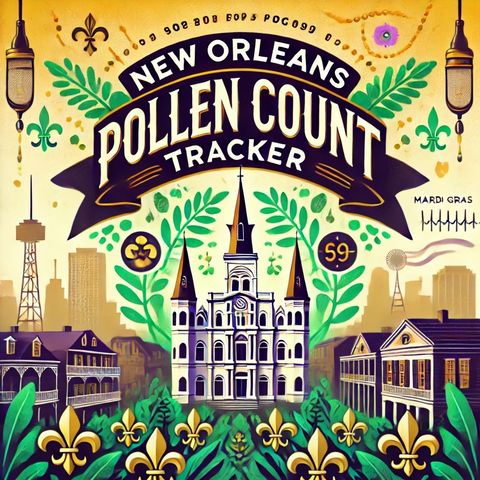Pollen Count for New Orleans, LA on 11-27-2024

Download and listen anywhere
Download your favorite episodes and enjoy them, wherever you are! Sign up or log in now to access offline listening.
Pollen Count for New Orleans, LA on 11-27-2024
This is an automatically generated transcript. Please note that complete accuracy is not guaranteed.
Description
Pollen count and levels are essential for anyone in New Orleans, especially for those with allergies, as they directly impact daily activities and well-being. On November 27, 2024, New Orleans...
show moreToday's pollen levels will primarily be driven by seasonal changes and prevailing weather conditions typical of late autumn. The region is stepping into cooler temperatures, but a recent warm spell may contribute to an extended pollen season for certain plants. This could lead to continued pollen production beyond typical expectations for this time of year.
The primary contributors to today's pollen count will be mold and weed pollen. Although tree pollen is less of a concern in late November, mold spores and weed pollens, especially from ragweed, linger in the air. Ragweed is notorious for its persistence and can remain active until the first hard frost, which New Orleans has yet to experience this year.
Mold spores are abundant due to humid conditions, although a slightly drier spell has reduced some of the usual levels. The presence of molds like Cladosporium and Aspergillus may cause discomfort for allergy sufferers. These molds thrive in the moist environment of the region and are particularly active following periods of rain or high humidity.
Today's weather forecast predicts slightly warmer temperatures with occasional gusty winds. Wind can exacerbate pollen dissemination by carrying particles over long distances, affecting areas far from their origin. While winds may not be strong enough to raise the pollen count significantly, they could influence how sensitive individuals perceive air quality.
For allergy sufferers, it's advisable to remain indoors during peak pollen hours, typically in the early morning and late afternoon. Keeping windows closed and using air purifiers can help reduce indoor pollen levels. If outdoor activities are necessary, wearing masks and using antihistamines or other allergy medications might ease symptoms.
Monitoring local weather and allergy forecasts can help residents stay informed about changes in pollen levels throughout the day. Online resources and mobile apps provide real-time data and valuable advice for managing allergies effectively.
Overall, while New Orleans will experience moderate to high pollen levels today, individuals with respiratory sensitivities can take proactive steps to mitigate their exposure. By staying informed and prepared, the community can better navigate the challenges posed by pollen exposure during this transitional time of year.
Information
| Author | QP-5 |
| Organization | William Corbin |
| Website | - |
| Tags |
Copyright 2024 - Spreaker Inc. an iHeartMedia Company

Comments